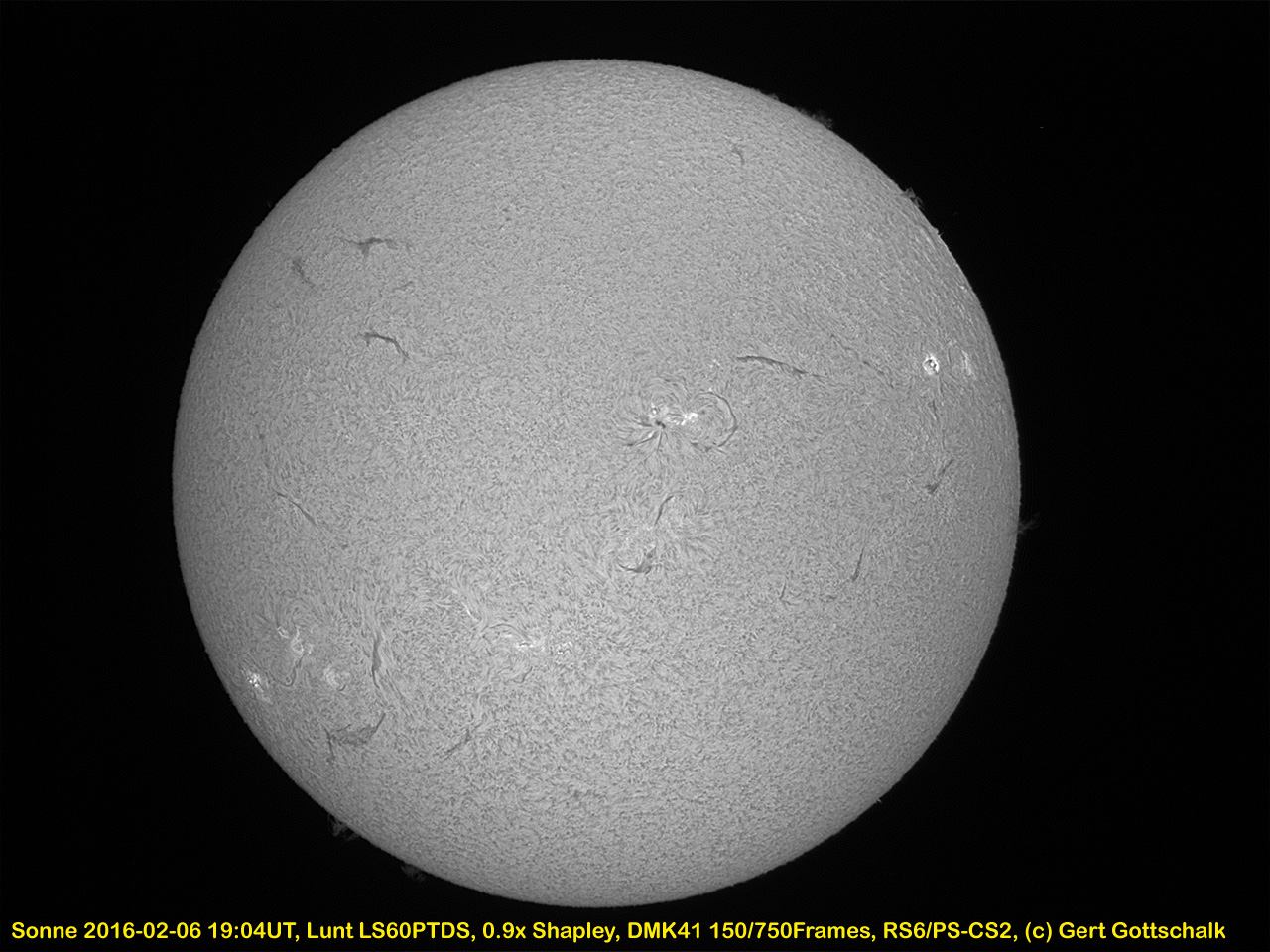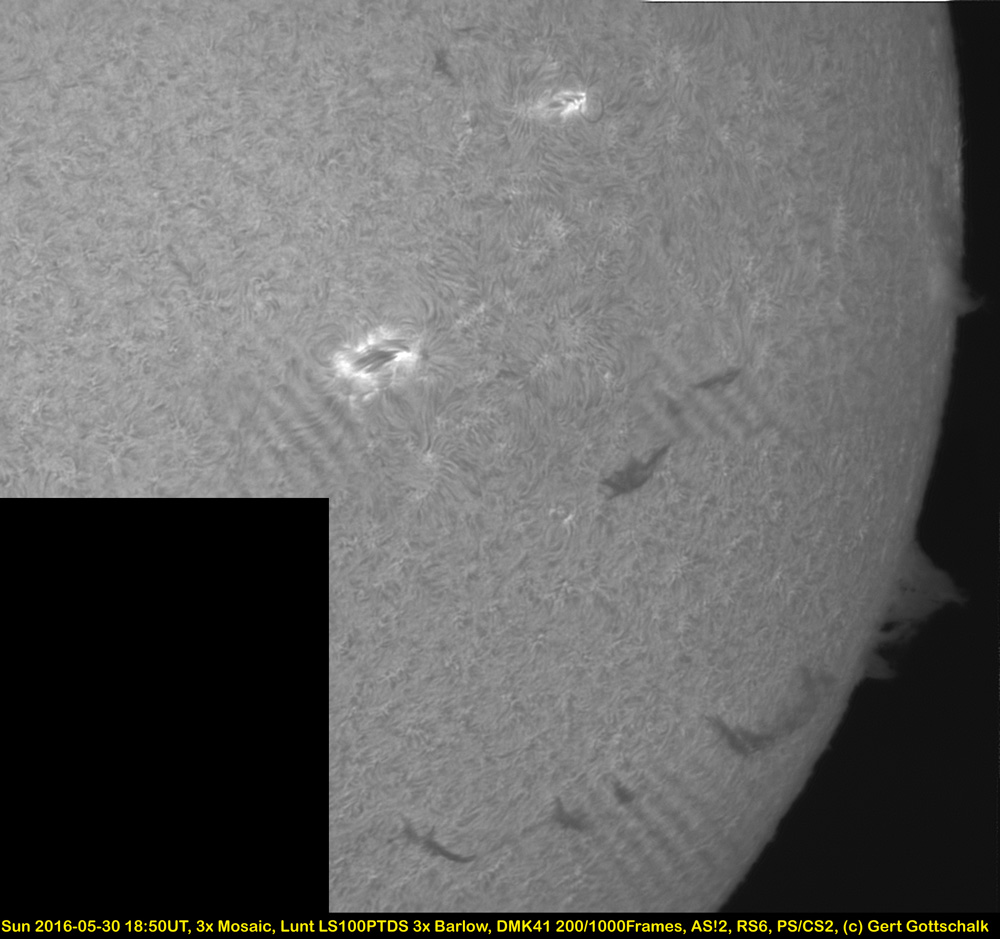Images taken with Lunt LS60 or Lunt LS100 in single stack or double stack mode as indicated near the image.
Recording with ASI174 and DMK41. Typically 10% to 20% of 750 / 1000 / 2000 frames stacked in AutoStakkert!2 processed in Registax 6 and Photoshop CS2.
Timelapse videos with Python script and ffmpeg.
2016-11-24 20:48UT. The day was nice and clear but Seeing was quite blurry. So an overview image was all I could do. No sense trying a detail with the barlow lens.
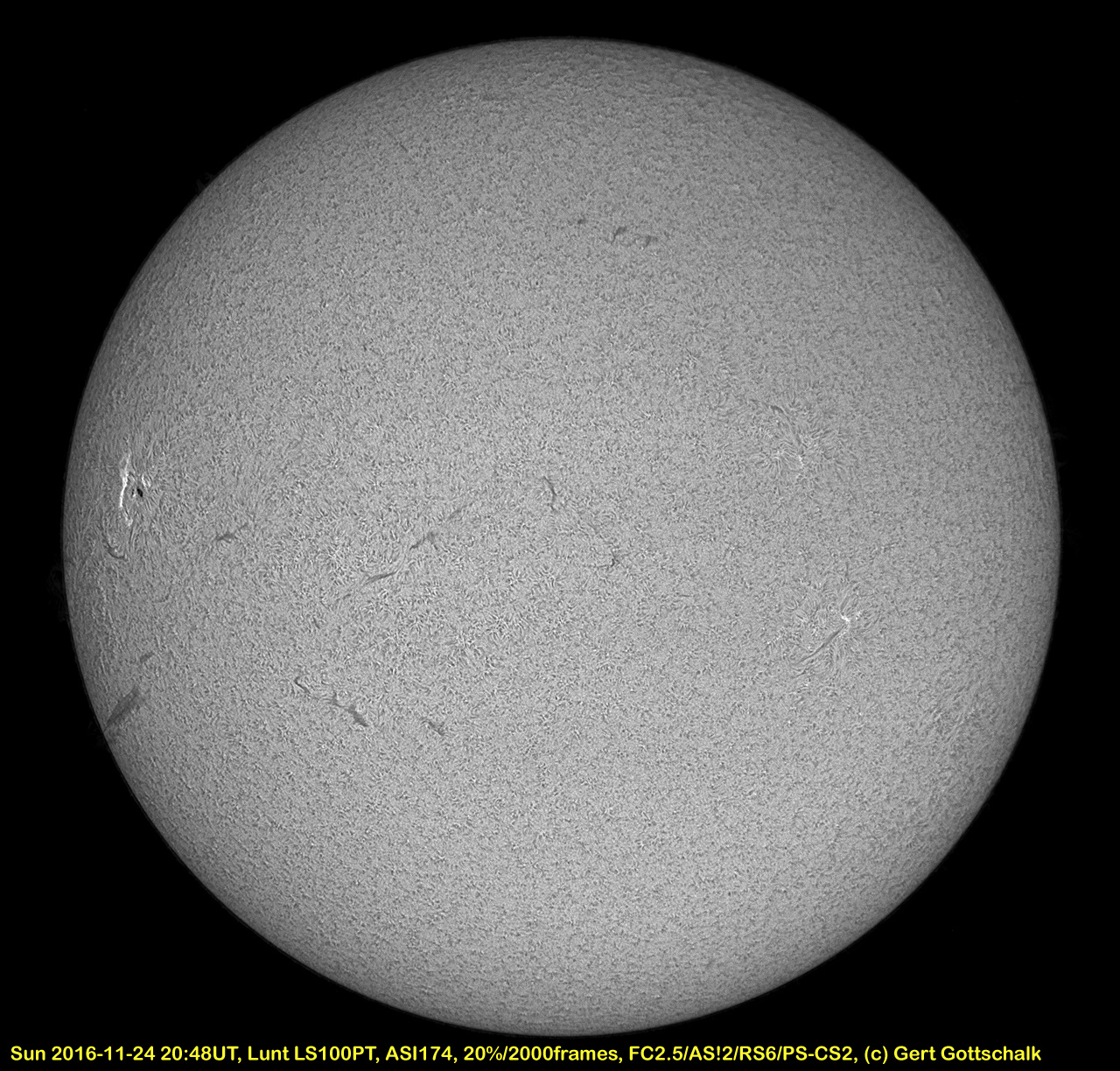
2016-11-24 20:14UT. An interesting looking contrail drifting accros the Sun.
2016-11-13 19:45UT. On the day before I was visiting my friend Don's wonderfully located property in the Sierra Foothills where he plans to build himself a genuine Hobbit-House. We enjoyed the day with solar observing with the Lunt LS60PT. Following up on the visual observation I wanted to preserve the memory and took an image of the Sun with the Lunt LS100PT. Using two different exposure times to bring out surface and prominence detail a composite was created in Photoshop.

Don viewing the H-Alpha Sun.
2016-10-07 19:05UT. Seeing was very bad today with cirrus clouds moving through.
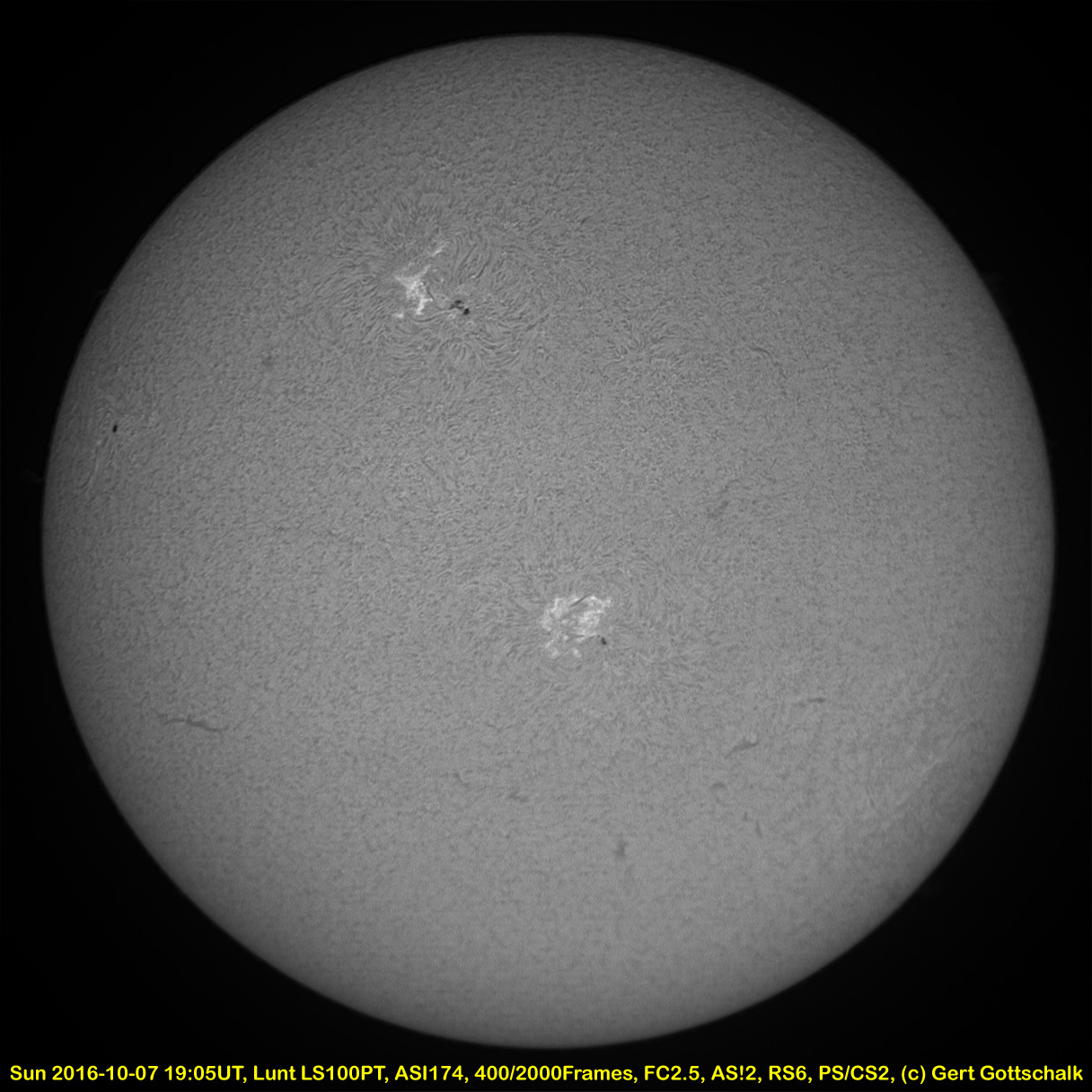
2016-10-07 19:22UT. Only one extra detail from the active region near the disk center.
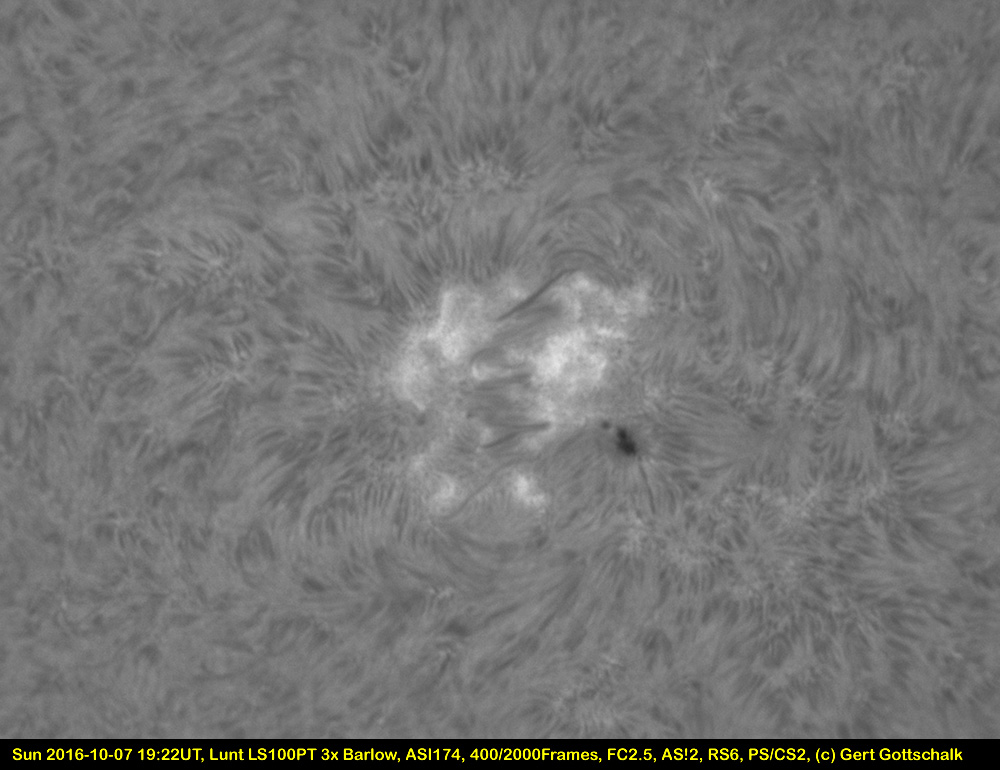
2016-10-06 19:55UT. The seeing was average and we start with a full disk image from the Lunt LS100PT and the ASI174.
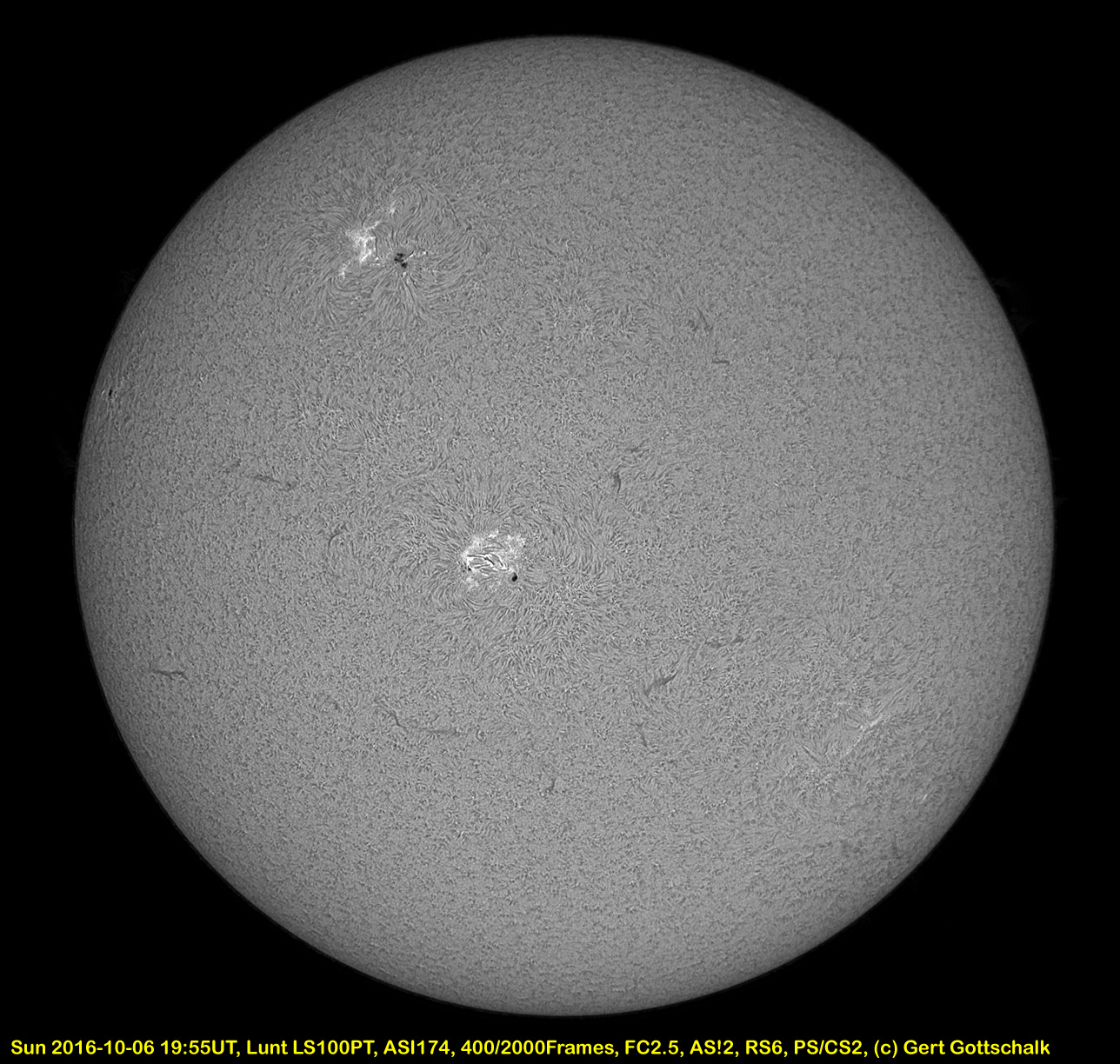
2016-10-06 20:08UT to 21:14UT. 62 AVIs were captured at 1min intervall to create a prominence animation.
2016-09-30 18:41UT A long session with the LS100PT and ASI174. We start with a full solar view.

2016-09-30 18:52UT With the 3x Barlow lens we zoom in on the long filament.
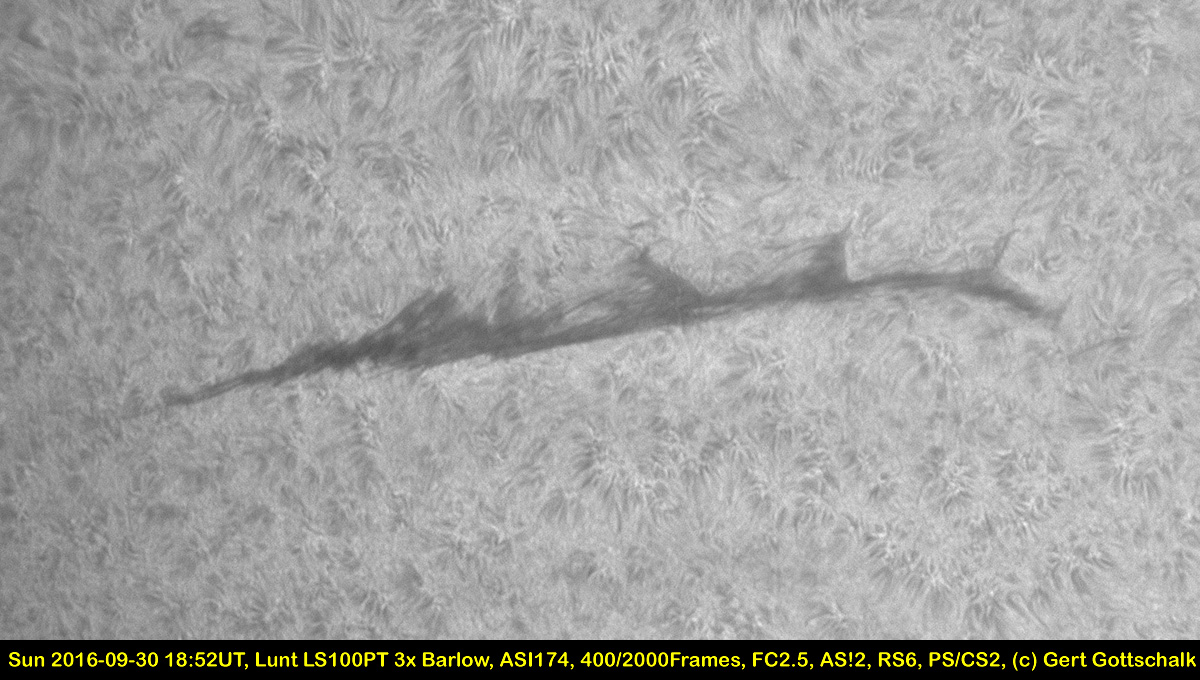
2016-09-30 20:05UT We move to the Sun's limb where two nice prominences are. For both we capture bout 1hr of timelapse data and later create a video. Here the first prominence with 3x Barlow.
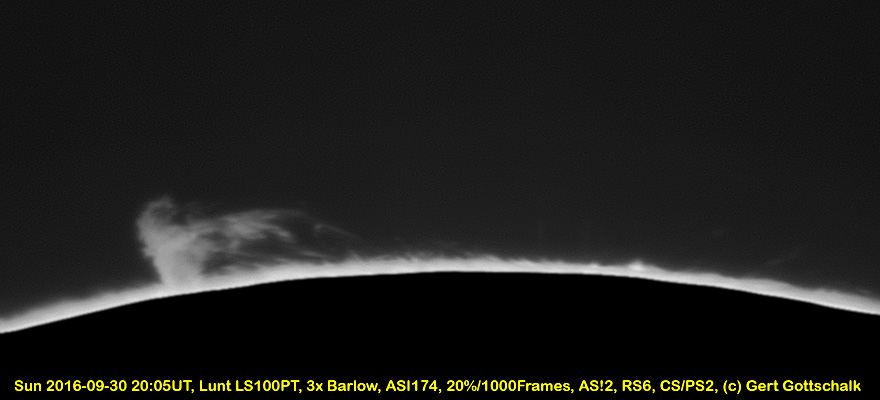
And here the timelapse.
2016-09-30 21:08UT the second prominence. Both prominence images were rotated to show the Solar limb horizontally.

And the timelapse for the second prominence.
2016-09-18 18:28UT. First light for the ASI174 camera. The camera has impressive sensitivity in H-Alpha. In later experiments with double stacking and Barlow lens the exposures were under 10ms. The sensor size is matching the focal length/image scale of the Lunt LS100 very nicely. The full solar disk fits just right on the sensor frame.
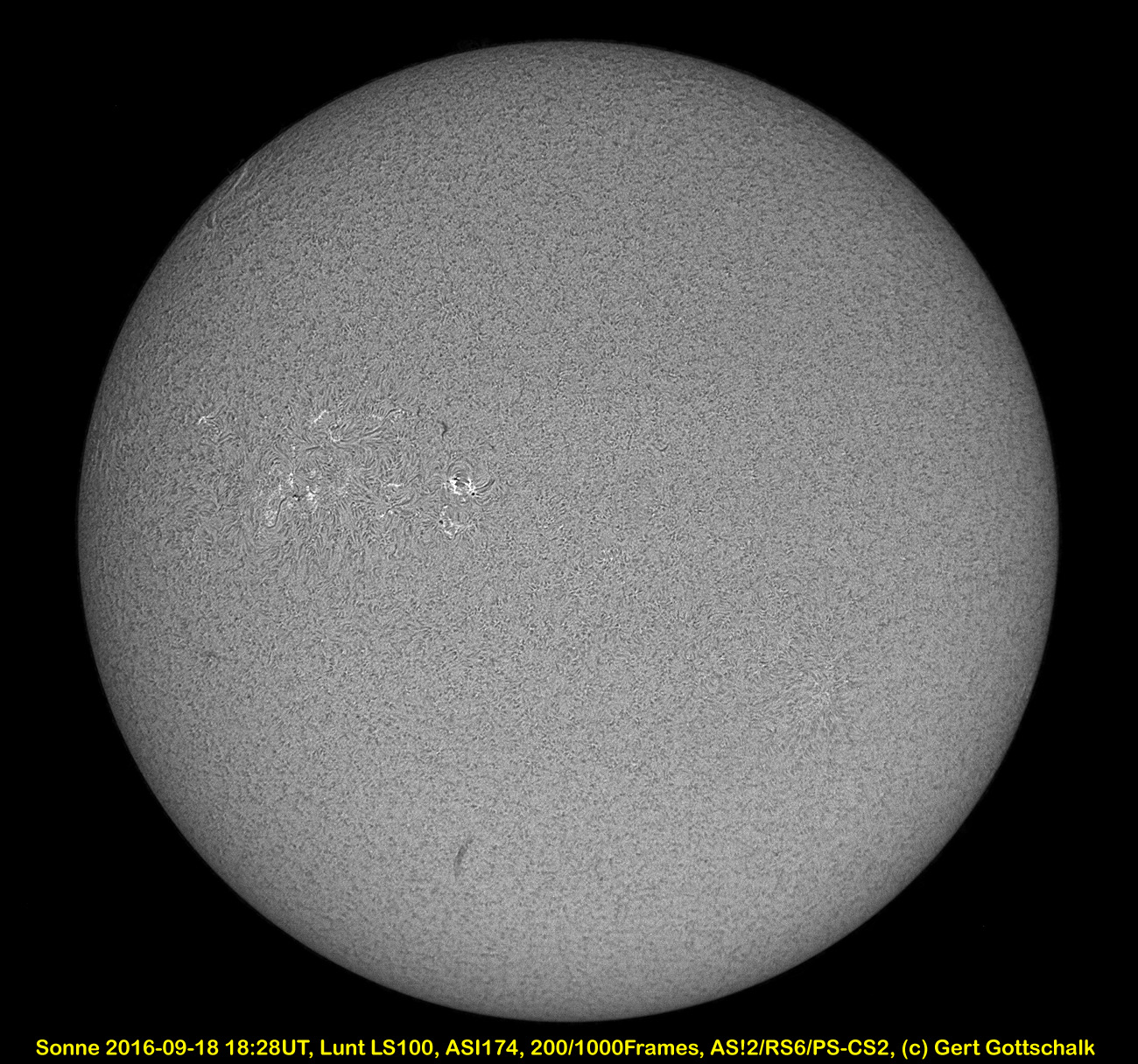
2016-09-18 18:44UT. With the same configuration but softer gamma setting it is possible to capture the chromosphere and prominences.
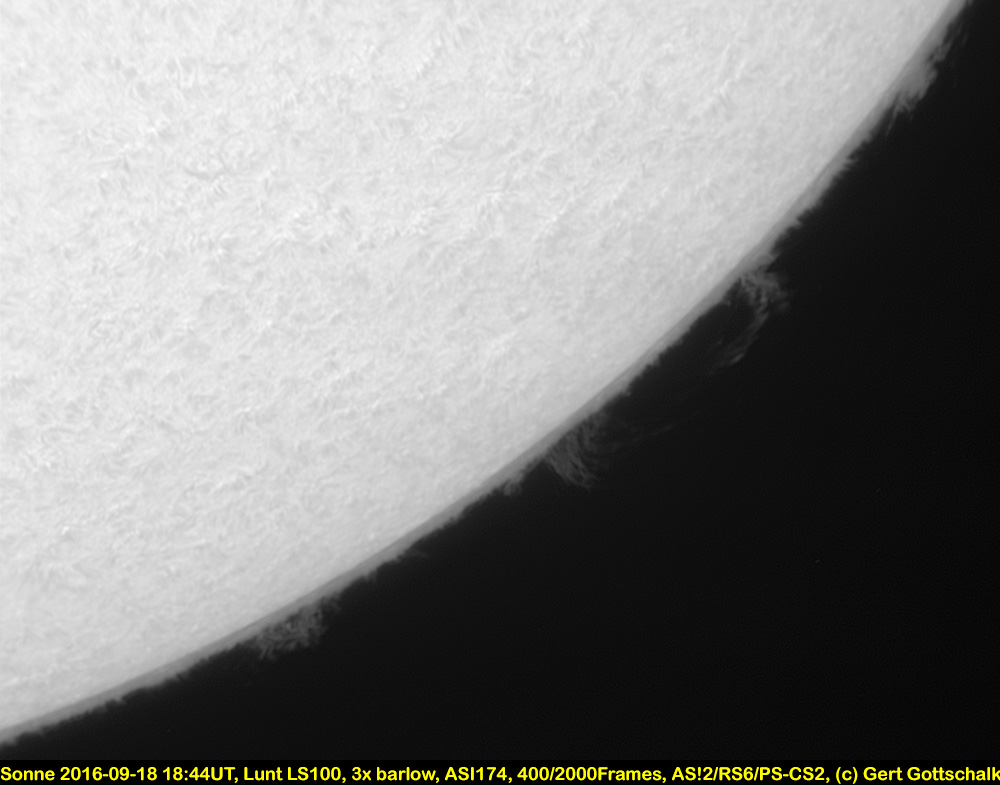
2016-09-18 18:40UT Here an example image with the 3x Barlow. Not the full sensor was used. It was cropped to 1000x800pixel which still gives a very generous image size. In this slightly cropped configuration the camera delivers 42frames per sec. So it is easy to capture 2000 frames for stacking.
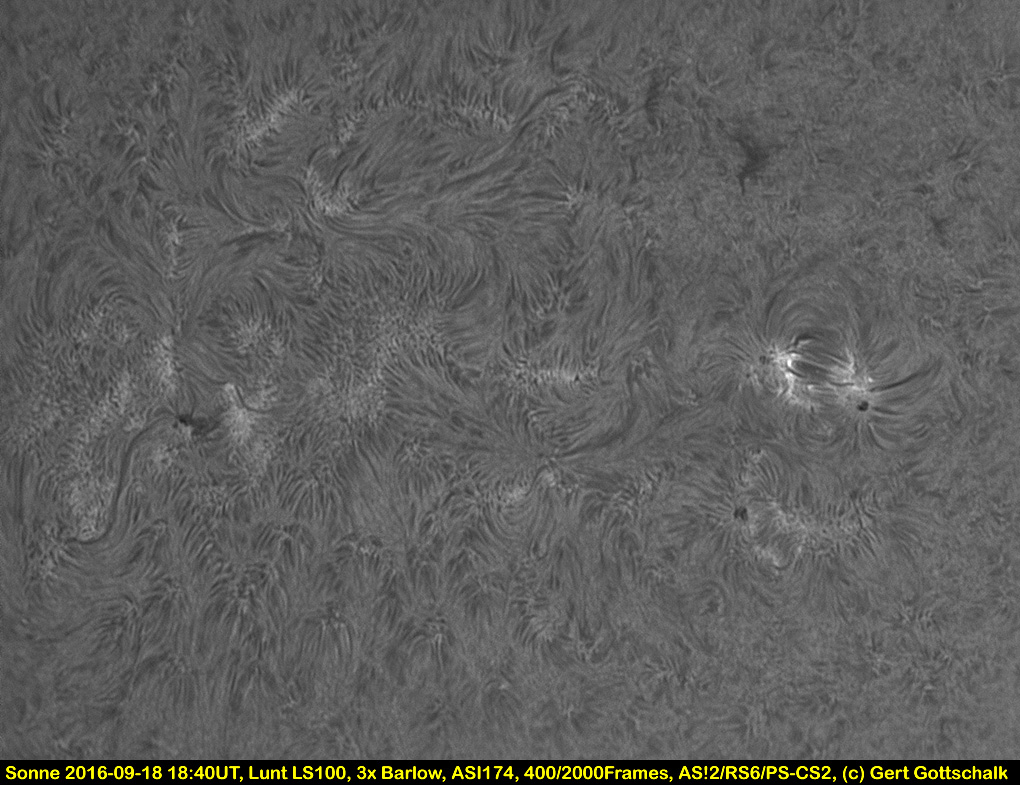
2016-09-18 18:55UT - 19:55UT. Recording 44 AVIs for a timelapse animation.
2016-08-04 18:54UT. Out of a series of AVI recordings with the Lunt LS100 I discovered that a sequence of images from the limb of the Sun would almost make a composite of a large segment of the limb with prominences. Even though it has a gap I put the composite together. These were 3 images with the 3x Barlow and DMK41. (click on the image for full size version)
2016-08-04 19:05-20:02UT A sequence of recorded AVIs was combined into a time lapse animation. There is not that much activity in the sunspot region. Only a few small plasma wisps near the center of the frame.
2016-7-23 19:36UT. To show better surface contrast the next image is with the Lunt double stack unit. We see some overall activity but as we approach the solar minimum no outstanding regions are seen.
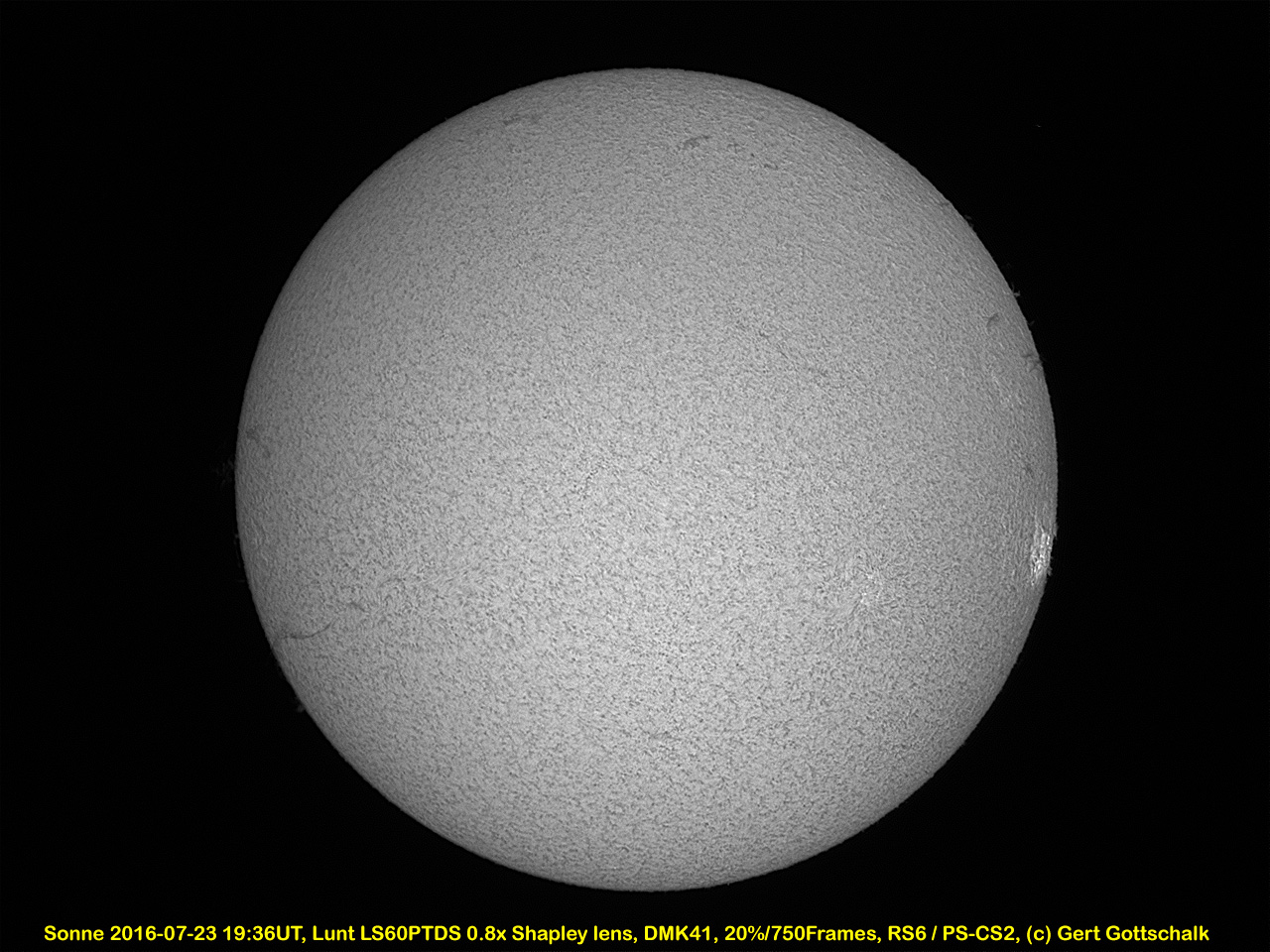
2016-7-23 19:32UT. We had a warm day and the seeing was not as good so I only imaged the Sun with the 0.8x Shapley lens to fit the image scale on the DMK41 chip. First image is for prominence only exposure using the single stack configuration of the Lunt solar scope.
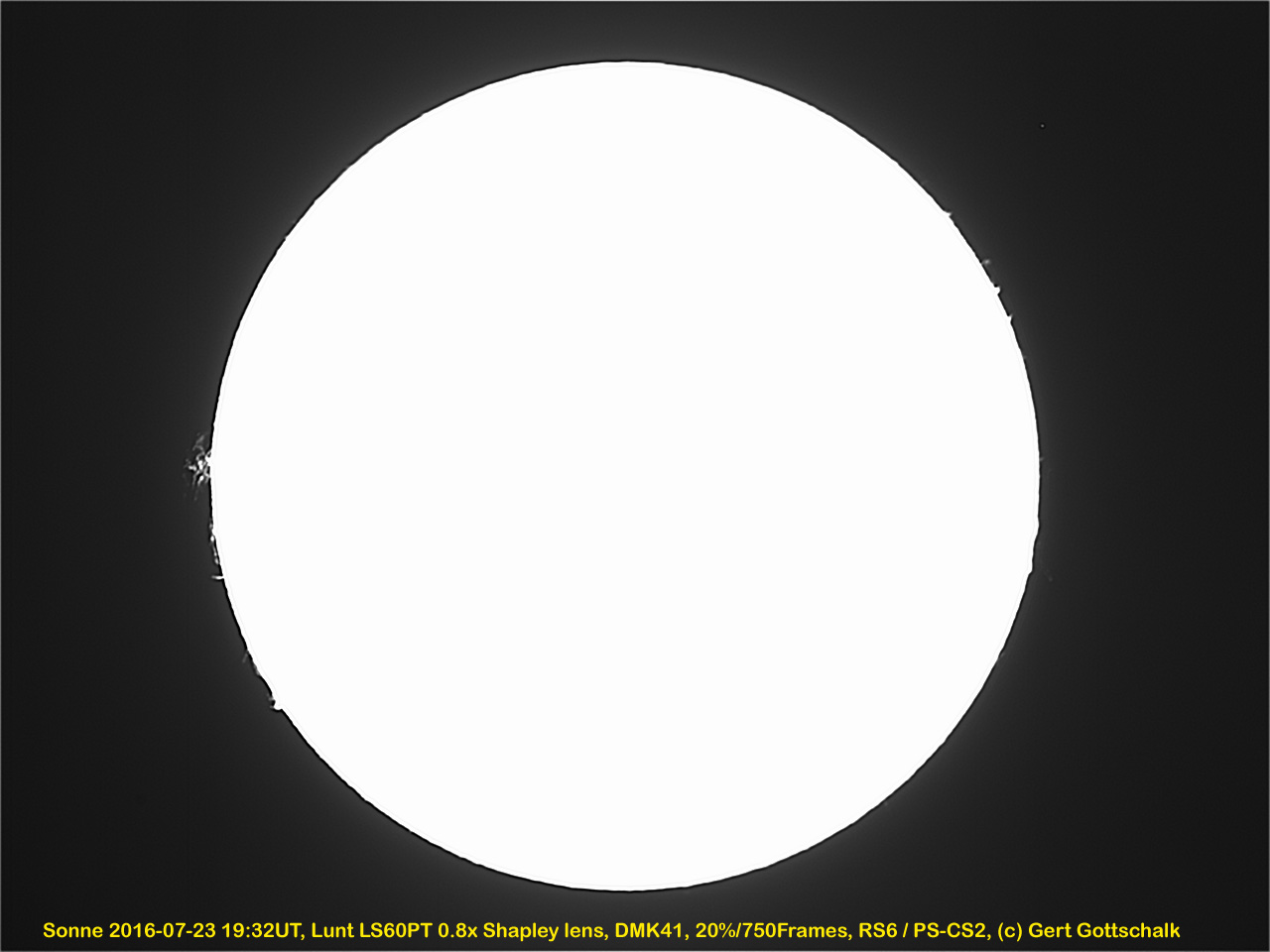
2016-06-05 18:28UT. This is a day with low solar activity. No big prominences or surface activity regions. I used the 60mm Lunt telescope for an overview of the Sun. To catch both prominences and surface at the same time the more narrow band double stack filtering was used.

2016-05-30 18:50UT Before I started an AVI sequence for a time lapse I wanted to cover some of the active spots on the solar disk. They were pretty much concentrated in an area near the limb with a prominence nearby. The seeing allowed the use of the 100mm Lunt scope with double stack filter and 3x Barlow. With a 3x mosaic most of the activity was captured and combined into one image. Click on the image for full size.
2016-05-30 19:00-19:58UT Centering the frame on the two brighter regions of activity I collected 39AVIs over the course of 1hr. Those were then processed into a timelapse video using ffmpeg.
2016-05-29 18:25UT The Sun was not showing a lot of activity today so I decided to take a full disk image and not zoom in on an active region. The Lunt LS60PT was used in double stack mode. Combined with a 0.9x Shpaley lens the solar disk fully fits on the DMK41 sensor. The beauty of the double stack filter is to show surface and prominence detail at the same time.
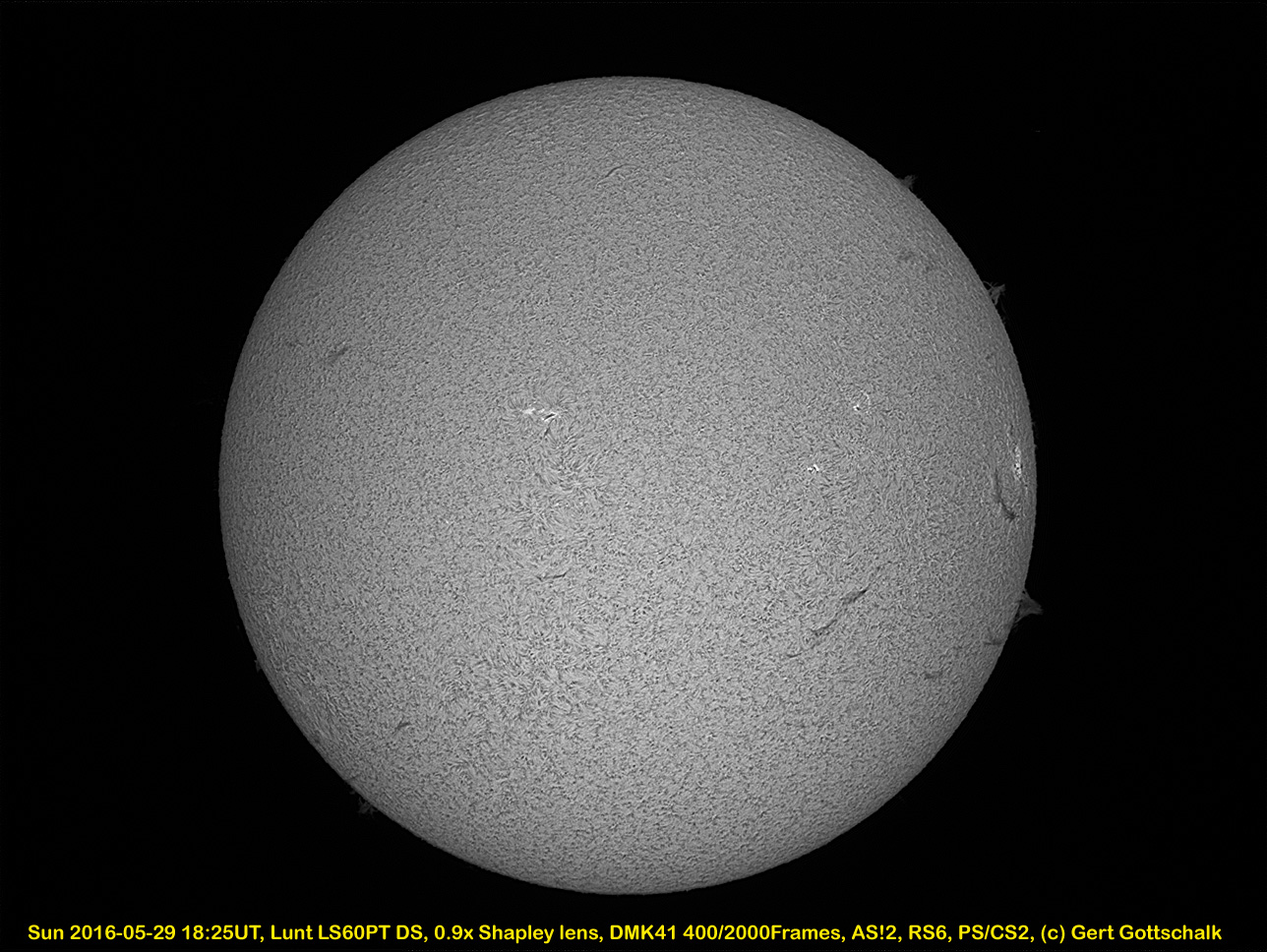
2016-04-16 19:30UT The only active object today on the Sun was a large sunspot with some flare activity. Seeing was quite variable. I took a sequence of AVIs to later combine into a timelapse. One of the better still frames from 19:30UT is shown below. The white lines around the sunspot would all cause some flare activity in the course of the day. This sequence was takes with the Lunt LS100PT sin single stack mode. For image scale the Meade 3x Barlow lens was added. recording with the DMK41 camera at about 15frames/sec.

2016-04-16 18:54UT to 21:07UT. 65 AVIs were processed into 65 still images that again were combined into the time lapse. The alignment was done with a python script and time lapse mp4 was created with ffmpeg.
2016-04-02 19:12UT Today there were two large prominences. These are best imaged with single stack filtering to allow for shorter exposure times. Exposures were adjusted for the [prominences and the over exposed surface war blacked out. To improve image scale the 3x Barlow lens was used on the Lunt LS100PT scope. The image was rotated to show the prominence upward.
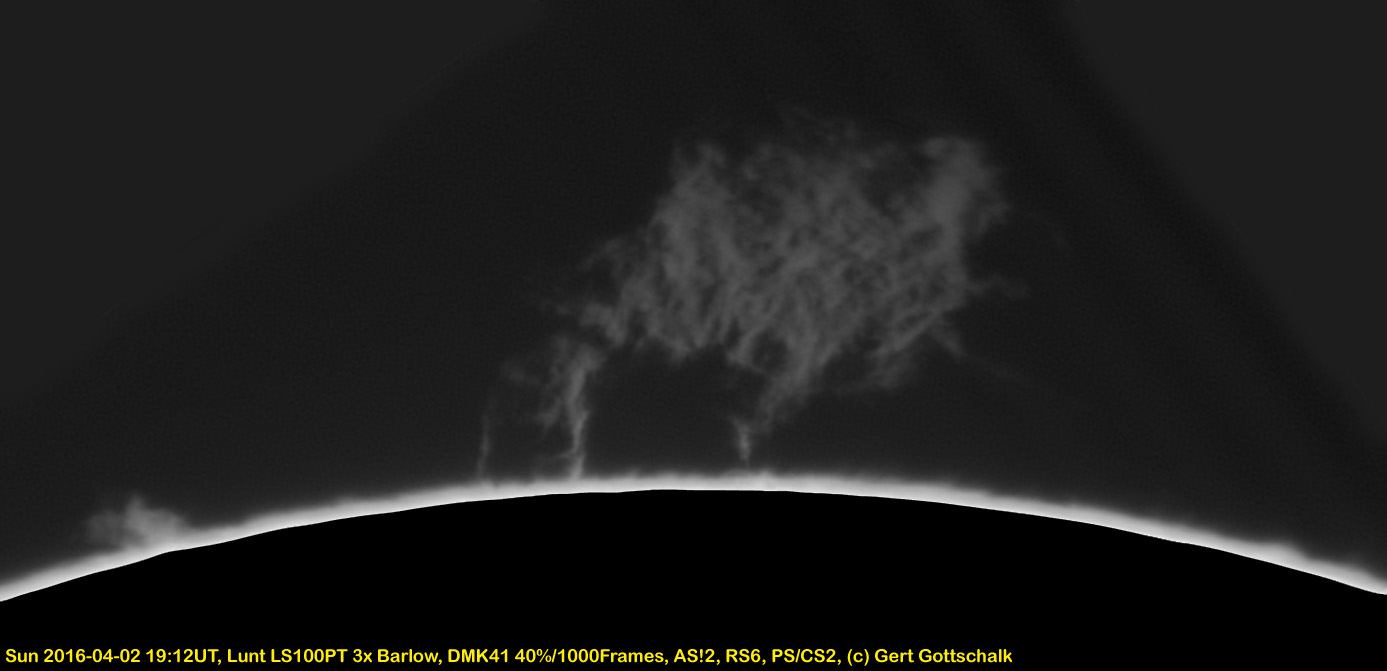
From the above prominence 17 individual frames were made into a timelapse animation. The frames were registered using a customer python script and combined into mp4 using ffmpeg.
2016-04-02 19:18UT Here is the second prominence. On the solar disk the two were almost directly opposing each other. Here both are rotated upward for better visualization.
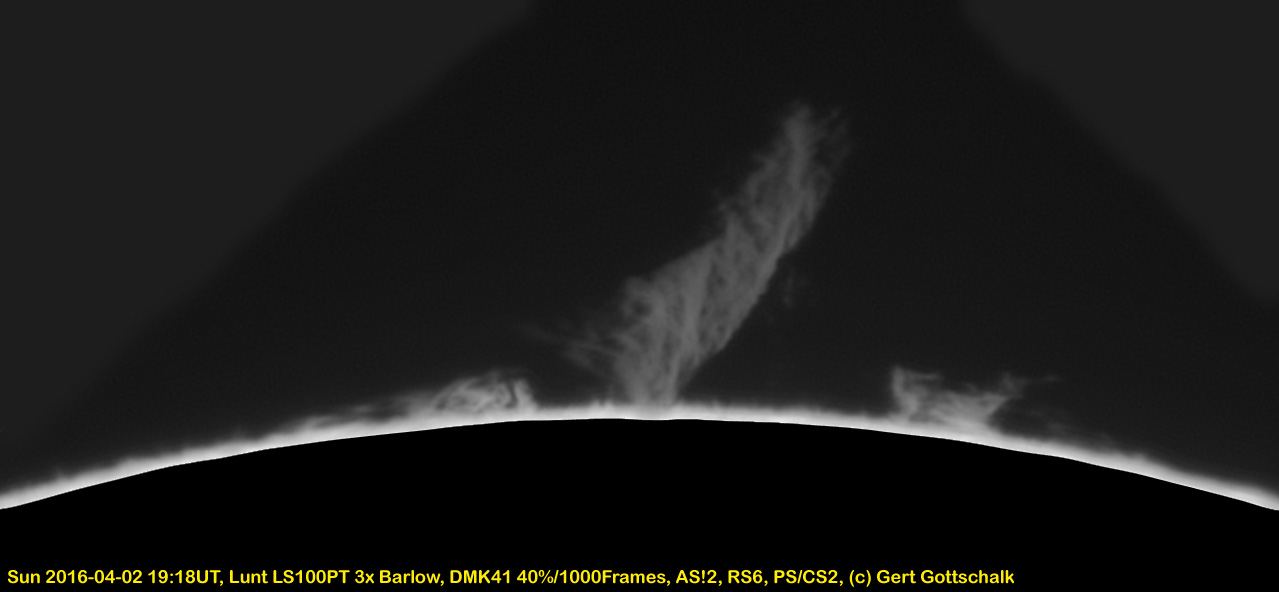
30 frames were combined into an animation. Unfortunately seeing and focus problems deteriorated the image quality in the middle of the sequence.
2016-03-26 19:44UT Spring morning weather seems to bring good seeing conditions along. (At least for urban areas) So to use the conditions I picked the 100mm Lunt telescope with 3x Barlow lens. We have a nice active region at the eastern limb of the Sun.
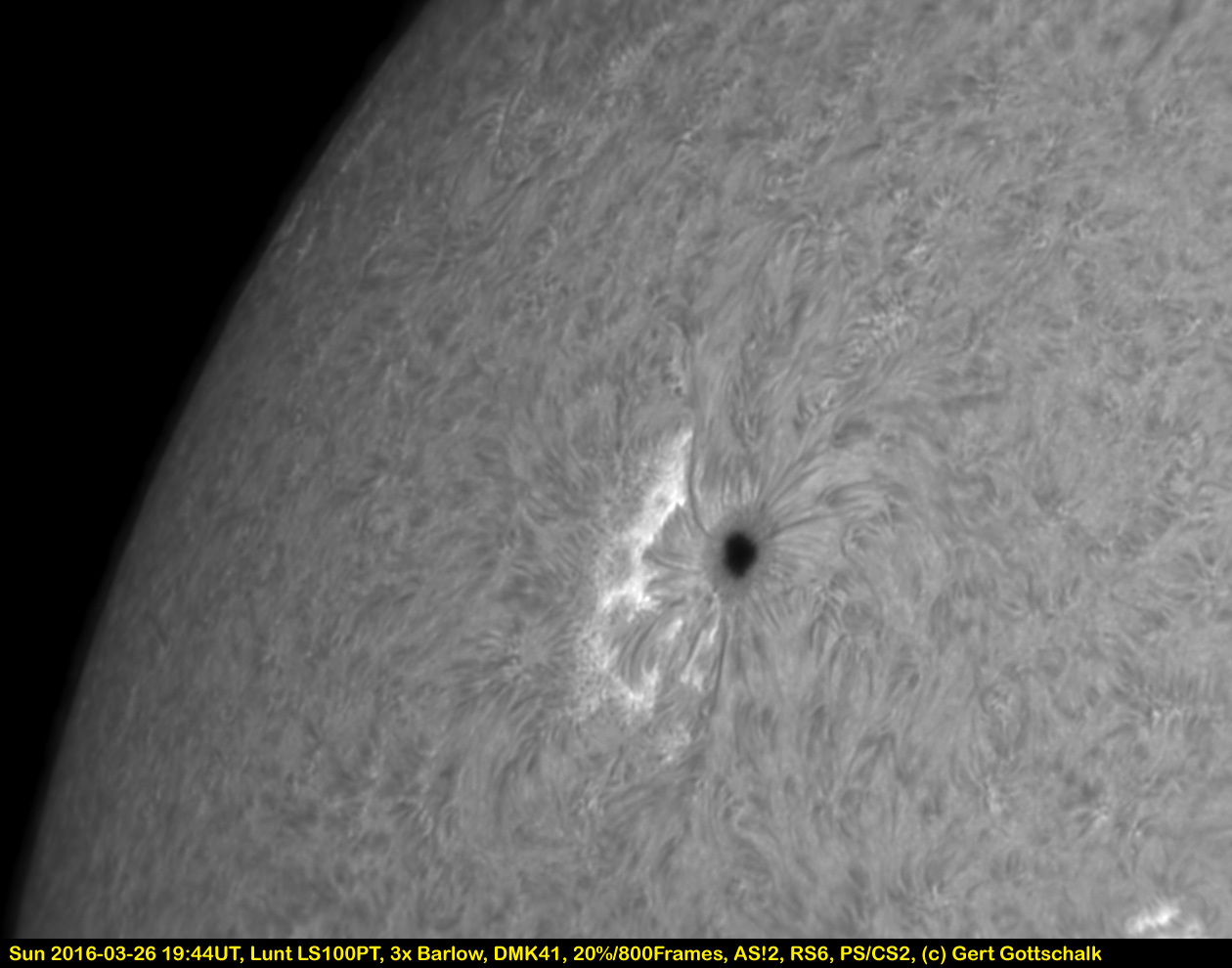
2016-03-26 19:39UT An arrow shaped filament near the center of the Sun's disk.
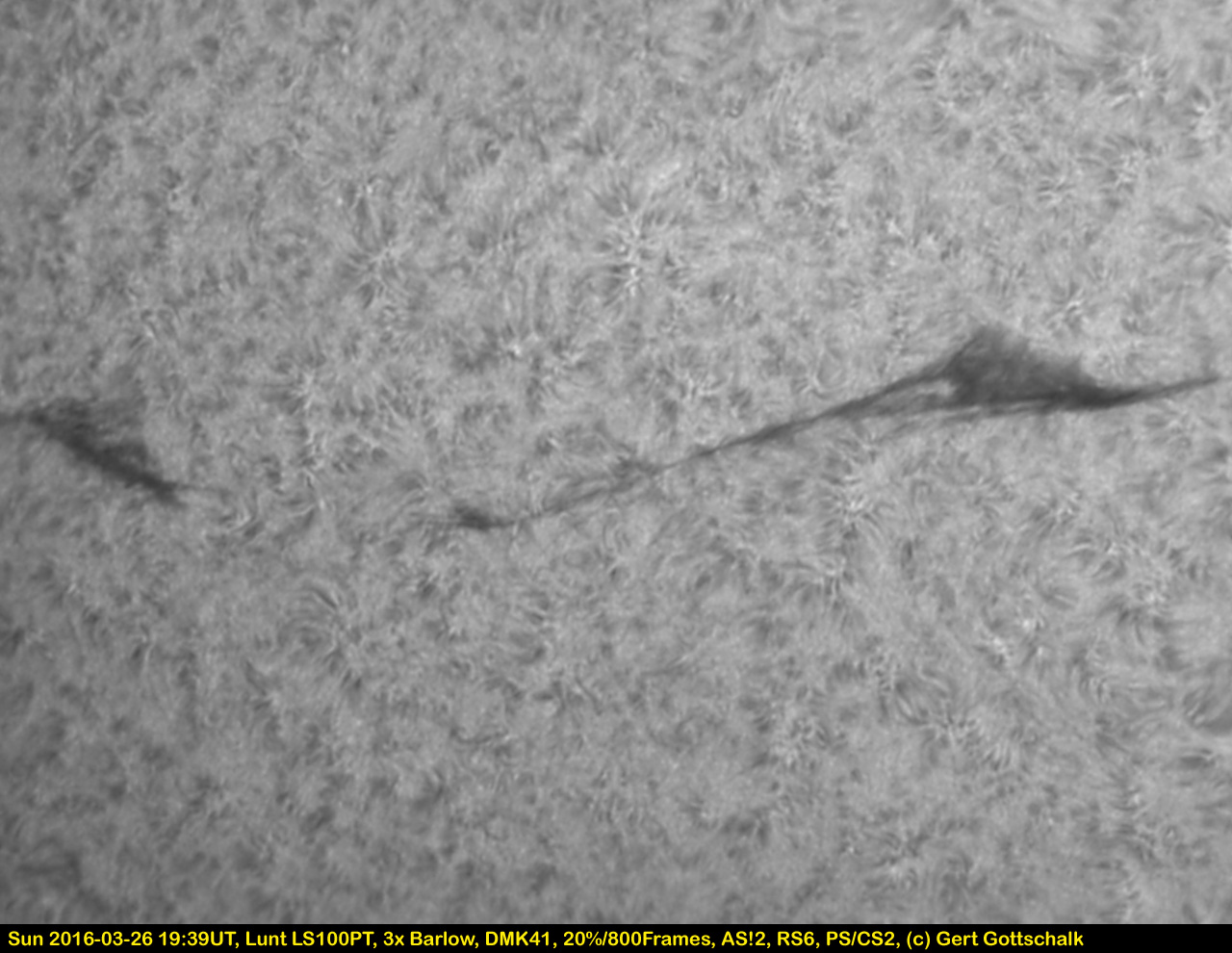
2016-03-26 19:34UT Another active region with sunspot at the western limb.
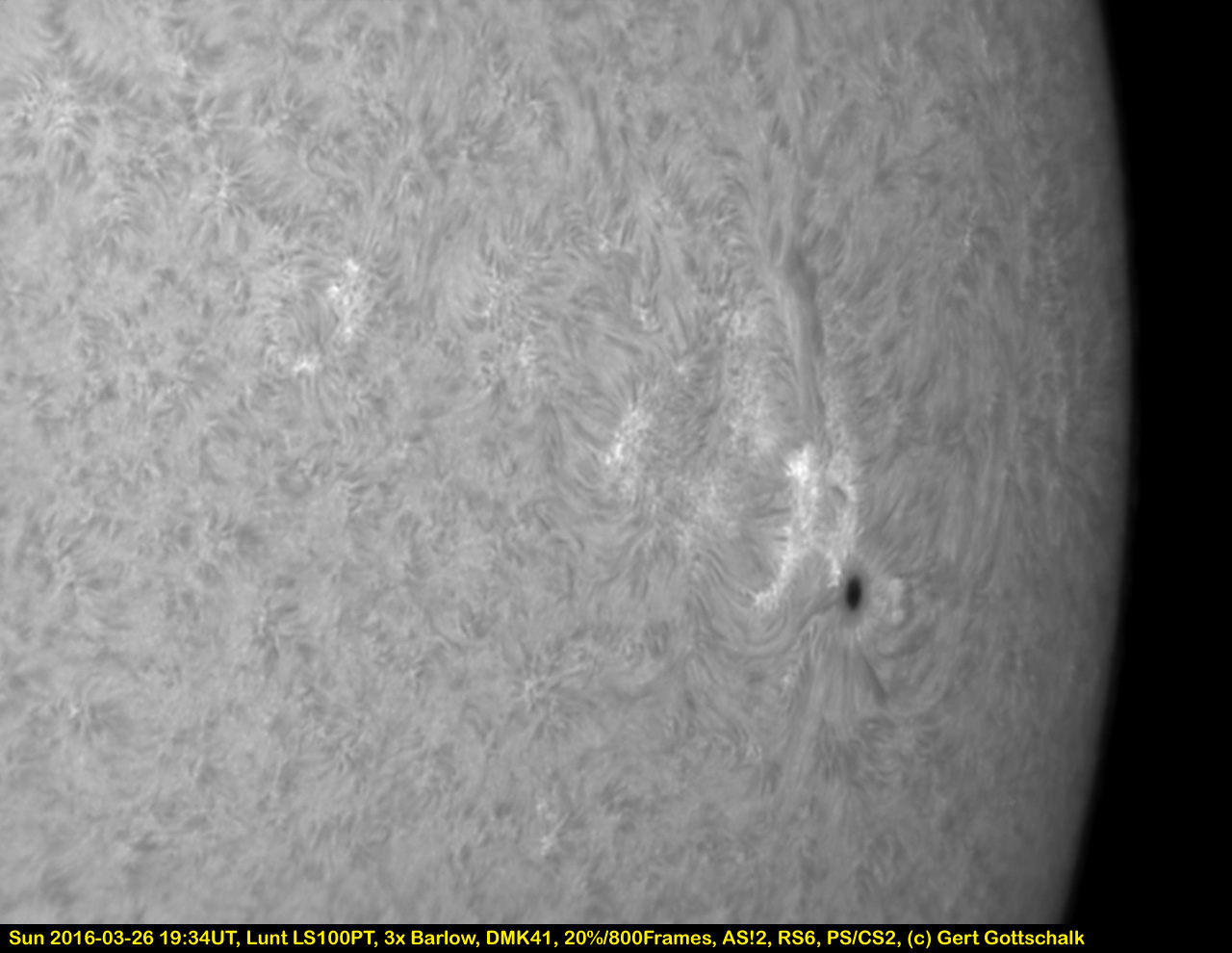
2016-03-26 19:00UT - 19:28UT What are the effects of single stack and double stack filtering? I'm choosing an area at the eastern limb again. In single stack filtering we have photospheric light outside of the H-A line punching through. This is undesired as it reduces contrast on the disk. For prominences the impact is not so severe. We can see the still partially transparent chromosphere hovering over the photosphere. In double stack filtering we have narrowed the bandwidth such that photospheric light no longer leaks through. The chromosphere is now opaque. It seems that the Sun is bigger. But we only see the Chromosphere now as part of the disk. In the animated GIF we flit between single and double stack filtering.
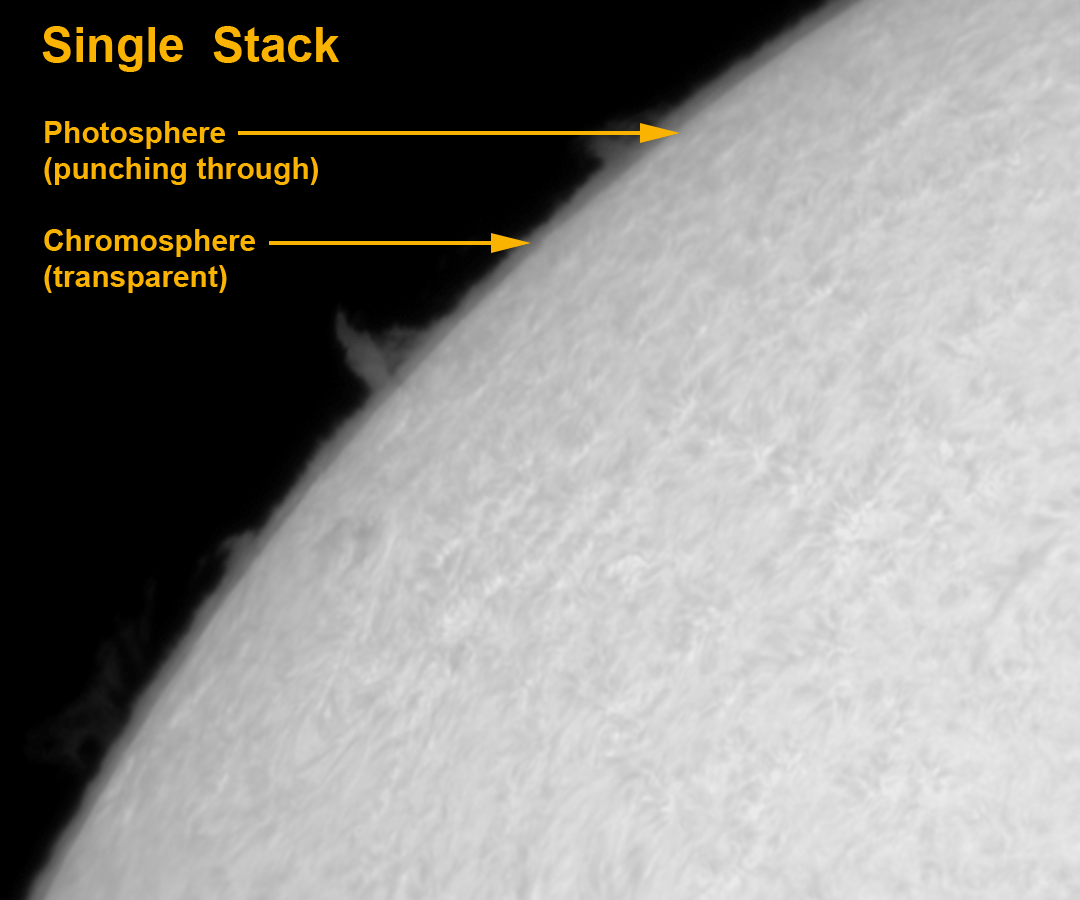
2016-02-06 19:04UT The first image taken in 2016. The 2015-2016 El-Nino season brought rain and clouds and prevented any solar observing weekends. This Saturday the sun came out and with the 60mm Lunt scope in double stack mode I could capture some images. Shown here is an image with a softer gamma setting trying to show prominences and surface detail together.
